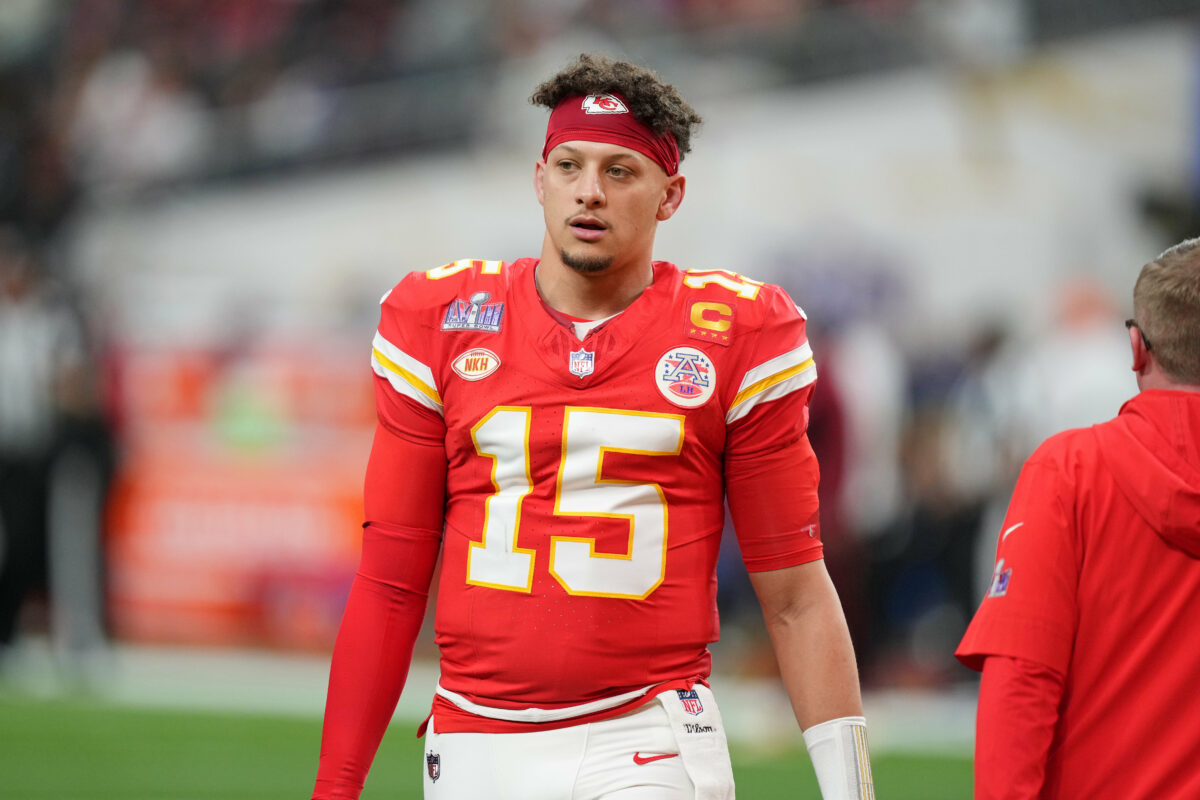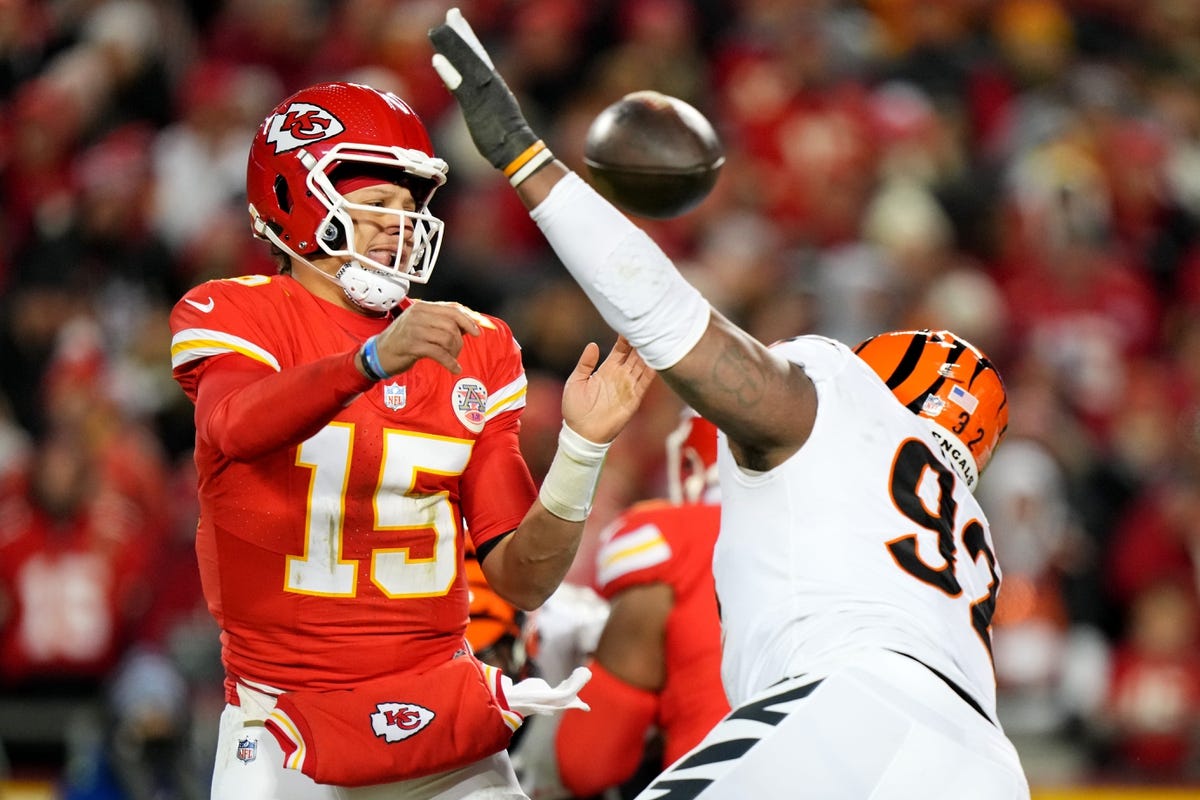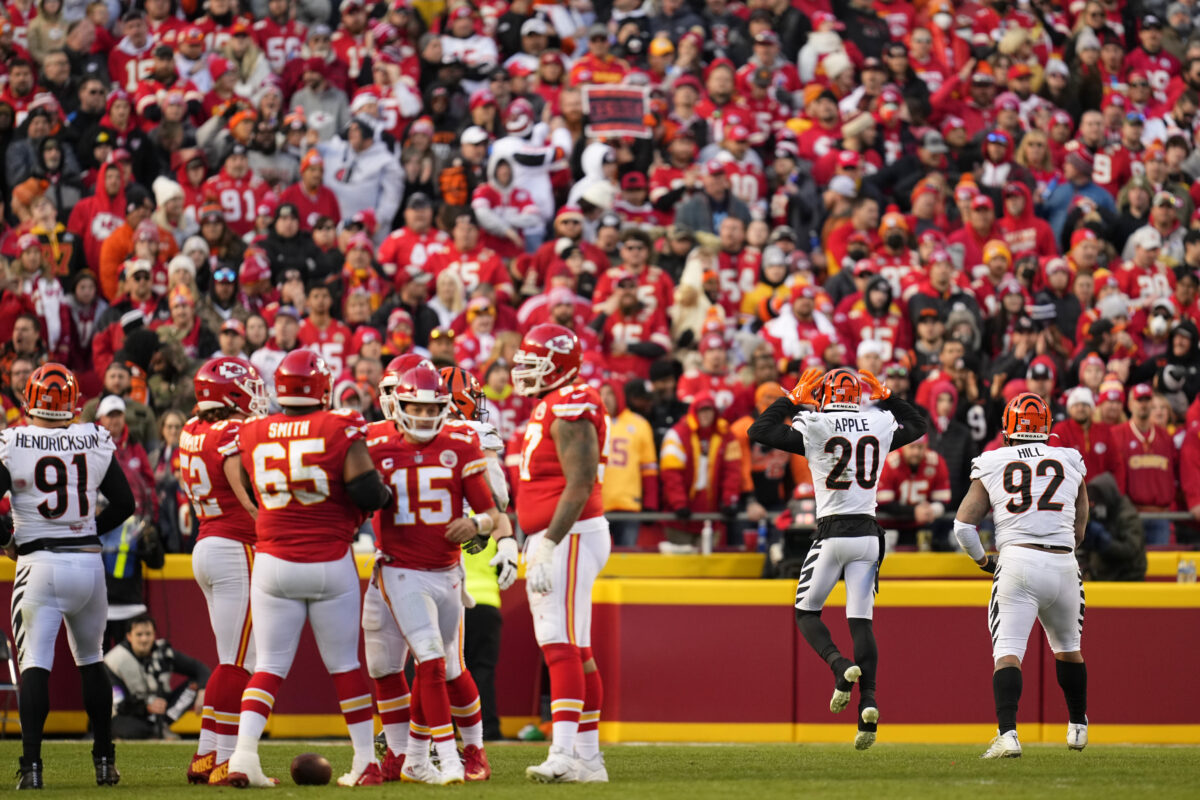Since he became the Chiefs’ full-on starting quarterback in 2018, Patrick Mahomes ranks fifth in the NFL in passing attempts (1,652). sixth in completions (1,092), second to only Matt Ryan in passing yards (13,868), and first in passing touchdowns — 114. and Russell Wilson is second with 106. Mahomes has been a big play waiting impatiently to flip the switch since he met the NFL head-on, and it’s tough to come up with other quarterbacks who have been as dynamic or effective in their first three full seasons.
But as Mahomes recently told Kevin Clark of The Ringer, he is looking for more, and the improvements he seeks seem to be a refutation of one of the things that makes him so spectacular — the ability to create plays outside of structure. There was no greater (though unsuccessful) example than this pass he tried to complete in the Chiefs’ 31-9 loss to the Buccaneers in Super Bowl LV. Down by that same score in the fourth quarter, and desperately trying to make anything happen, Mahomes defied gravity after breaking the pocket, and made a miracle throw that fell incomplete against a brilliantly-designed Bucs defense that was able to generate consistent pressure, and still solve all problems in coverage.

After this throw, you can see it on Mahomes’ face: “I have now done this miracle [expletive] to the highest level any human possibly can, and there are times when even the miracle [expletive] doesn’t work.”
Mahomes was pressured a Super Bowl-record 26 times on 56 dropbacks, completing nine of 26 passes for 78 yards, no touchdowns, one interception, and a passer rating of 27.4. When he left the pocket under pressure in that game, Mahomes completed two of 10 passes for 10 yards, minus-5 air yards, his one interception, and a passer rating of 0.0. He would have been much better off hurling the ball into Section 250 over and over than doing what he did.
Thus, an offseason in which the Chiefs completely redefined their offensive line (there is not one projected starter who was a starter last season), and a sea change in Mahomes’ philosophy.
“I kind of get back to that backyard-style football a little bit too much,” Mahomes told Clark. “And you could definitely see that in the Super Bowl. I mean, there were times that pockets were clean and I was still scrambling,”
This was true, and it happened right from the start. It was as if Mahomes went into the Super Bowl estimating that his depleted offensive line would be overwhelmed by Tampa Bay’s excellent pass rush, and reacted accordingly from the first play.
“I’ve been going back [working] on that,” Mahomes continued. “Making sure that I trust the guys around me and trust the pocket, make the read within the pocket, and not try to make the big play happen.”
The problem with the miracle [expletive], even when practiced by such a dangerous purveyor as Mahomes, is that you can’t build an entire passing game out of it. Quarterbacks still have to win in the pocket under pressure, and that’s just as true now as it was for Sammy Baugh, Johnny Unitas, Joe Montana, and Peyton Manning. Whether you’re mobile or not, and capable of creating magic out of havoc or not, that’s the frosting. What you do in the pocket is the cake.
It’s not that Mahomes was terrible from the pocket last season — quite the opposite. Including the postseason, per Sports Info Solutions, he attempted 545 passes from the pocket, completing 379 for 4,499 air yards, 2,091 air yards, 26 touchdowns, six interceptions, and a passer rating of 110.4. But in the pocket with pressure added? That’s where things got dicey. In those instances, Mahomes completed 71 of 141 passes for 832 471 air yards, six touchdowns, three interceptions, and a passer rating of 78.4.
You may argue the point that most quarterbacks are far less efficient in the pocket under pressure, but that’s not always the case, and certainly not always to that degree. Russell Wilson had a 101.8 passer rating in such instances. Kirk Cousins? 104.7. Matthew Stafford? 96.8. Chargers rookie passer Justin Herbert completed 94 of 157 passes under pressure from the pocket for 1,203 yards, 664 air yards, eight touchdowns, two interceptions, and a passer rating of 102.3.
As Mahomes’ team faces Herbert’s team twice a season, Mahomes had a front-row seat to stuff like this. In Week 17, Chargers tight end Donald Parham Jr. motioned from right to left pre-snap, made himself available for the backside quick read, and watch how Herbert moved around to avoid pressure, made an off-platform throw, but stayed (just barely) in the pocket as opposed to bailing and having to re-set everything.

Again, folks, this is a rookie.
Now. Mahomes did have reasons to believe in his ability to create artistry outside the pocket. So, let’s not throw this out entirely. Under pressure outside the pocket last season, he completed 43 of 94 passes for 568 yards, 392 air yards, seven touchdowns (the most in the NFL), one interception, and a passer rating of 101.8. Mahomes is able to create shot plays out of chaos consistently because he’s a brilliant on-the-run passer, and his offense is set up for big plays outside of structure. So, it would be easy enough for Mahomes to stand on all that and say, “This is who I am — like or lump it, take it down the road and dump it.” The fact that he has no interest in doing so is an encouraging sign for a player who is already slamming previous quarterback performance marks against the wall.
And it’s not like you want to eliminate this kind of wizardry when your quarterback can actually pull it off.

Mahomes mentioned to Clark what he’s trying to learn from Tom Brady, the winning quarterback in that Super Bowl. It’s relevant, because while nobody will ever mistake Brady for Michael Vick, Brady is the best in-the-pocket mover in NFL history — capable of ripping defenses to bits under pressure by employing subtle and correct movement in the pocket and keep everything in front of him. In Brady’s case, it’s made him vulnerable to interior pressure right in his face, but it’s easy to see Mahomes imagining what he could be with his already-established gifts, AND the ability to dance in the box.
“The way he’s able to move within the pocket and find those lanes and still make those big time throws downfield is something that I think I need to get better at and something that I need to continue to grow with. And so that’s definitely one thing I take from him.”
Mahomes also mentioned Aaron Rodgers as an evolutionary example, and Rodgers provides perhaps the ultimate paradigm for Mahomes. Rodgers has become an amazing example of a quarterback who can do everything you want in structure, and still blow things up in a positive sense when the play falls apart.
“I think the biggest thing with Aaron is you see how he’s evolved throughout his game. It’s kind of like what I’m talking about, where he used to scramble a lot more, make all the different throws, and now he can just completely dice you up through the pocket,” Mahomes said. “And then when those opportunities come and he starts scrambling, he makes the throws, and he can still do all that stuff. So, I really watch that.”
The perfect quarterback has yet to be created, but if Patrick Mahomes can put it all together in the pocket, he may be as close to that ideal as we’ve seen to date.





















